A garden hose can quickly become kinked, preventing water from flowing through it properly. This can be frustrating when you need to water your plants or clean your driveway. In this guide, we will discuss how to unkink a garden hose easily and efficiently. We will also answer some common questions about garden hoses. Follow these tips and you’ll be able to get your hose working like new in no time!
Why Are Garden Hoses Prone to Kinking?
Garden hose is an essential tool for anyone who takes care of their own lawn or garden. They are used to water plants, clean up debris, and provide a source of water for many other outdoor activities.
That’s great when you’re trying to coil them up for storage, but it also means that they’re susceptible to kinking.
There are a few reasons why garden hoses tend to kink:
Improper storage
One of the most common reasons garden hoses kink is because they’re not being stored properly. If you just leave your hose out in the open, it’s more likely to get tangled up and kinked.
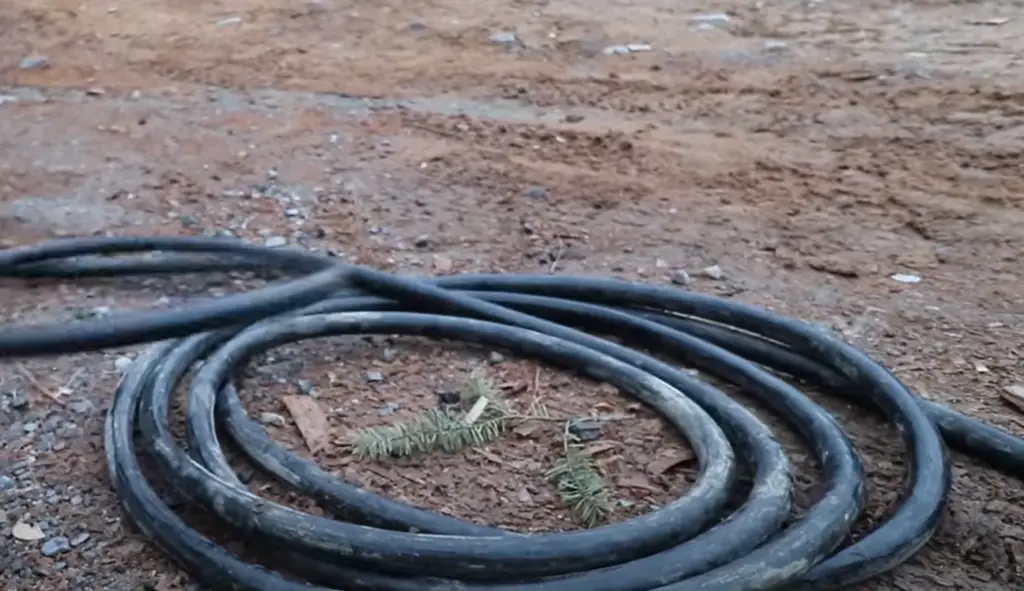
Instead, you should try to coil your hose neatly and store it in a cool, dry place. This will help prolong its life and prevent it from getting kinked.
If you must leave your hose out in the open, try to use a hose reel or another type of storage device that will keep it from getting tangled up.
Poor material quality
Another reason garden hoses kink is because they’re made of poor-quality materials. Some hoses are made completely of plastic, which is more likely to kink than other materials.
If you’re looking for a hose that’s less likely to kink, look for one that’s made of a sturdier material like rubber or vinyl. These materials are more flexible and less likely to kink.
You should also look for a hose with reinforced outer walls.This will help prevent the hose from collapsing in on itself and reduce the risk of kinking.
Reinforced hoses are usually more expensive than non-reinforced hoses, but they’re worth the investment if you want a hose that’s less likely to kink.
Age of the hose
Even if you take good care of your hose, it will eventually start to wear out. Over time, the material will become more brittle and less flexible, which makes it more susceptible to kinking.
If your hose is starting to show signs of wear and tear, it’s probably time to replace it.
Age is also a factor if you’re using a second-hand hose. If you don’t know how old the hose is, it’s best to assume that it’s on its last legs and replace it sooner rather than later.
In some cases, you might be able to temporarily fix a kinked hose with a quick fix like duct tape or zip ties. But these are only temporary solutions; eventually, you’ll need to replace the hose entirely.
Whatever the cause, a kinked garden hose can be a real pain. The good news is that there are some simple ways to fix a kinked garden hose. In this article, we’ll show you how to unkink a garden hose using some common household items. Read on for more information!
Removing kinks in garden hose
Luckily, there are a few easy ways to remove kinks from your garden hose that can be done with common household items.
Straighten your hose along the walkway
One way to remove kinks is to straighten your hose along the walkway. This will help to evenly distribute the weight of the hose and prevent it from kinking.
To do this, simply lay your hose out in a straight line on the ground. You may need to use some rocks or other heavy objects to keep it in place.
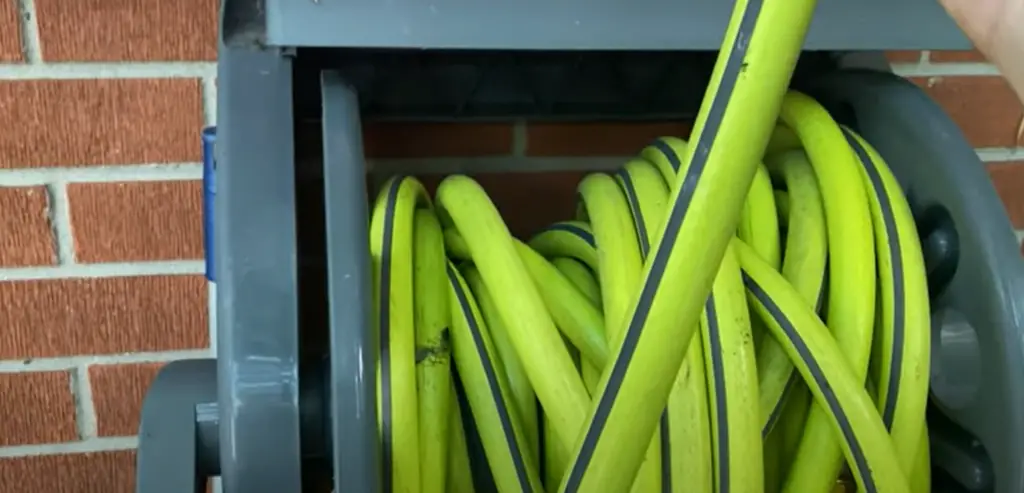
If you have a lot of garden hoses, you can also invest in a hose reel which will help to keep them organized and tangle-free. [1],[2],[3]
Leave the hose out in full sunlight
Another way to remove kinks is to leave the hose out in full sunlight for a few hours. The heat from the sun will help to soften the material, making it more flexible and less likely to kink.
At the same time, you should turn on the water and apply some pressure. This will help work out any remaining kinks in the hose.
This method is most effective if your hose is made of vinyl or another type of plastic. If your hose is made of rubber, it’s less likely to respond to heat from the sun. [1],[2]
Use splints or hose supports
If you have a small kink, you might be able to remove it by placing a splint or hose support on either side of the kink. This will help hold the hose in place while you straighten it out.
You can use anything that’s long and thin for this purpose, such as dowels, pieces of PVC pipe, or even chopsticks. Just make sure that whatever you’re using is strong enough to support the weight of the hose.
First, remove the fitting from the end of the hose. This will give you more room to work and make it easier to remove the kink.
This will help hold the hose in place while you straighten it out. After you’ve placed your splints on either side of the kink, gently pull on the ends of the hose until the kink pops out. You might need to wiggle it back and forth a bit to get it started.
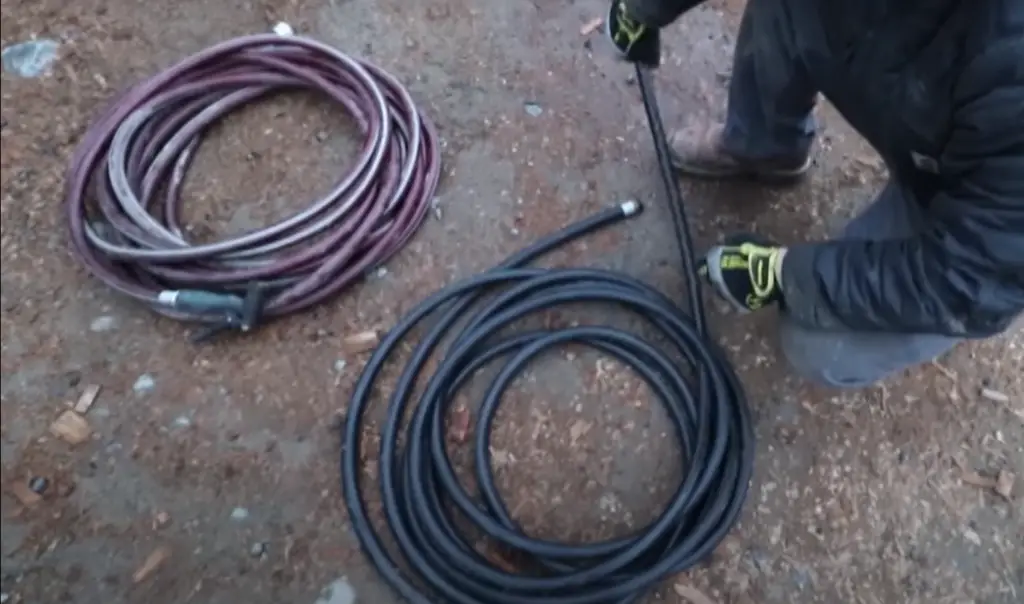
Finally, reattach the fitting and turn on the water to test for leaks.
After you’ve removed the kink from your garden hose, turn on the water and let it run for a few minutes. If everything seems to be working properly, put away your tools and enjoy your newly unkinked garden hose![3]
Comparison of Methods for Unkinking a Garden Hose
Garden hoses are essential tools for maintaining a garden or lawn, but they can become kinked and twisted, making them difficult to use. In this table, we compare different methods for unkinking a garden hose, including their effectiveness, ease of use, and cost.
| Method | Effectiveness | Ease of Use | Cost |
|---|---|---|---|
| Boiling Water | Highly effective | Easy | Low |
| Hose Hanger | Effective | Very easy | Low |
| Manual Straightening | Moderately effective | Difficult | Free |
| Commercial Hose Unkinker | Highly effective | Easy | High |
Explanation:
- Boiling Water: This method involves boiling a pot of water and carefully pouring it over the kinked section of the hose. The heat softens the plastic, allowing the hose to be straightened out. It is highly effective, easy to do, and low cost.
- Hose Hanger: This involves hanging the hose over a special hanger that allows the weight of the hose to straighten itself out. It is effective, very easy to do, and low cost.
- Manual Straightening: This involves manually straightening the hose out by hand, which can be difficult and time-consuming. It is free but only moderately effective.
- Commercial Hose Unkinker: This method involves using a specialized tool designed to unkink hoses. It is highly effective, easy to use, but comes with a high cost.
FAQ
How do you straighten a hose?
The best way to straighten a hose is to use a garden hose reel. This will automatically wind the hose up without kinking it. You can also try using an expandable hose, which is made of a flexible material that doesn’t kink.
If your hose is already kinked, you can try placing it under sunlight for a few hours. The heat will help to soften the plastic and make it easier to unkink.
Can you fix a kinked hose?
Yes, you can fix a kinked hose. There are a few ways to do this, and the best method will depend on the severity of the kink. For minor kinks, you may be able to simply straighten out the hose by hand. If the kink is more severe, you may need to use a plunger or a pliers to loosen it up. Finally, for really stubborn kinks, you may need to cut out the section of hose that is kinked and then reattach the two ends with a coupling.
Why does my garden hose kink?
There are a few reasons your garden hose might kink. If you notice that your hose always kinks in the same spot, it might be because of a problem with the materials or manufacturing of the hose. Hoses made out of cheaper materials are more likely to kink. Another reason your hose might kink is how you’re storing it. If you’re constantly yanking on your hose or winding it too tightly, it will eventually develop weak spots that are more susceptible to kinking.
How do you keep the kinks out of a water hose?
The best way to keep your hose from kinking is to use a hose reel. This will help you avoid having to constantly move your hose around, and it will also protect your hose from being damaged by the sun or other elements.
Another way to prevent kinking is to make sure that you regularly clean out your hose. If there is any dirt or debris build-up inside the hose, this can cause the hose to kink. Be sure to flush out your hose with clean water on a regular basis.
Useful Video: How to Get Rid of Hose Kinks
Final words
Kinking is a common problem among garden hoses. Kinks can interfere with the flow of water and make it difficult to use your hose. Luckily, there are a few easy ways to remove kinks from your garden hose. In this article, we’ve shown you how to unkink a garden hose using some common household items. Sometimes letting it bathe in the sun, slide a splint through it or remove the fitting can do the trick! We hope you found this article helpful! If you have any questions or comments, feel free to leave them below. Thanks for reading!
References:
- https://www.homestolove.com.au/how-to-avoid-kinked-hoses-9559
- https://treillageonline.com/how-to-fix-garden-hose-kinks/
- https://www.practicalgardening.blackdovenest.com/2011/04/garden-hose-kinks-how-to-fix.html


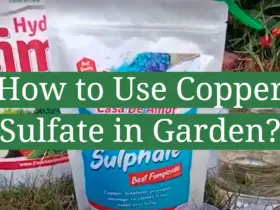




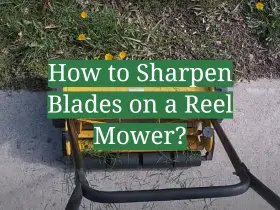


I was out in the garden trying to water my plants, but I couldn’t get the water to come out of the hose. I tugged and pulled at the hose, but it just wouldn’t budge. I looked online to see if there were any tips on how to unkink a hose, and I found this article.
According to the article, you can unkink a hose by coiling it up tightly and then unraveling it slowly. I tried this method and it worked! The water started flowing smoothly out of the hose and I was able to water my plants.
I remember the first time I got a garden hose. It was a beautiful day and my dad and I were out in the yard, planting some flowers. We were having so much fun until, all of the sudden, the garden hose started to kink up. We tried everything we could think of to get the kinks out, but nothing worked. In the end, we had to take it back to the store.
A few weeks later, we tried again. This time, we bought a hose that was supposed to be immune to kinking. But, of course, it kinked up anyway. We must have spent an hour trying to get the kinks out, but we just couldn’t do it.
Eventually, we gave up and just let the hose lie in the garden unused.
But one day, I decided to give it another try. I took the hose out of the garden and put it on my deck. I turned on the water and let it run for a while. Then, I went inside to get a bowl of water to pour on the hose. When I came back outside, all of the kinks were gone!
It was amazing! And ever since then, I’ve been able to unkink my garden hose every time it starts to kink up.
I have been gardening for as long as I can remember, and one of the most important tools for me has always been my garden hose. Over the years, I have learned a few tricks to keep my hose from kinking.
The first thing that I do is make sure that I coil the hose in a figure-eight pattern. This helps to keep the hose from getting twisted and kinked.
I also make sure that I store my hose in a cool, dry place. If the hose is wet or cold, it is more likely to kink.
If my hose does happen to kink, I use a garden hose unkinker to get it back to its original shape. This tool attaches to the faucet and helps to push the kinks out of the hose.
By following these tips, I have been able to keep my garden hoses from kinking, and they have lasted for many years.
I remember the first time I ever had to unkink a garden hose. I was so nervous! I wasn’t sure what to do. But it turned out to be really easy, and now I’m an expert.
Here’s how to unkink a garden hose: first, try to straighten it out as much as possible. Then, hold one end of the hose and slowly twist the other end in a clockwise motion. Keep twisting until the kink is gone.
It’s really that easy! Just take your time and be gentle, and you’ll be able to get rid of the kink in no time.
When I was young, my grandfather always used to tell me the story of the unkinked garden hose. It’s a simple tale, but one with a valuable lesson. The moral of the story is that prevention is better than cure, and it’s a lesson that I’ve carried with me throughout my life.
The story goes like this: there once was a man who had a garden hose that always kinked. No matter how much he tried to straighten it out, it would always coil back up on itself. One day, the man got fed up with his kinky hose and decided to cut it in half. But as soon as he did, he realized that he had made a big mistake. The two halves of the hose were now twice as kinky as they had been before!
The moral of this story is that it’s much easier to prevent kinks in your garden hose than it is to fix them. Here are a few tips to help you keep your hose from getting all twisted up:
– Don’t coil your hose up when you’re done using it. Instead, hang it from a tree or post so that it can air dry.
– If you have to coil your hose up, do it carefully and loosely. Don’t twist or knot it up tightly.
– Store your hose in a cool, dry place when you’re not using it. Exposure to heat and moisture can make it more likely to kink up.
There is nothing more frustrating than trying to water your garden and having the hose kink up on you. It seems like every time I need it, the hose decides to rebel. I have tried all kinds of methods to fix a kinked hose, but the easiest and most reliable way is to use a hose reel.
If you don’t have a hose reel, or if the kink is too far down the hose to reach, here is how to fix a kinked hose:
1. Turn off the water and unplug the hose from the faucet.
2. Find the kink in the hose and straighten it out as much as possible.
3. Hold one end of the hose firmly and turn on the water at full blast. Be careful not to get wet!
4. As the water pressure increases, the kink will slowly disappear. Keep an eye on it and adjust the angle of the hose as necessary.
5. Once the kink is gone, turn off the water and reattach the hose to the faucet.
I’ve been gardening for years, and I’ve learned one thing: you need to know how to unkink a garden hose. If you don’t, your plants won’t get the water they need, and your garden will suffer.
There are a few ways to unkink a hose. One way is to use a hose reel. This is a handy tool that helps you coil the hose up so it’s nice and neat. Another way is to use a hose splitter. This allows you to run two hoses at the same time, which is really helpful if you have a lot of plants to water.
But my favorite way to unkink a hose is by using a kink remover. This is a metal tool that looks kind of like a pipe wrench. You just slip it over the kink in the hose and twist it until the kink pops out.
I’ve tried all of these methods, and they all work well. But my personal favorite is the kink remover. It’s quick and easy, and it always does the job.
I never knew what it was like to have a kink-free garden hose until I moved into my current home. My old house had a hose that always seemed to kink up, no matter how much I tried to prevent it. It was always an annoying struggle to get the water flowing properly, and I would inevitably end up getting soaked in the process.
When I moved into my new home, the first thing I did was purchase a new garden hose. This time, I made sure to get one with a thick rubber coating that would prevent it from kinking. And it’s been a total life-saver! Even if the hose gets twisted or bent, the coating prevents it from kinking up.
I’m so glad I made the switch, and I can finally enjoy gardening without having to worry about the darned hose kinking up on me.
A few years ago, I was given a garden hose as a housewarming gift. It was the perfect addition to my backyard, and I loved using it to water my plants. However, after a while the hose started to kink up. Every time I tried to use it, the water would only come out in a trickle.
I tried everything I could think of to fix the kink in the hose – from using a pipe cleaner to trying to straighten it out by hand. But nothing worked. The kink just kept getting worse and worse.
Finally, I gave up and put the hose in the back of my closet, where it sat for months on end. Every time I passed by it, I sighed, knowing that I’d have to deal with it eventually.
But one day, I decided to give it another try. This time, instead of trying to fix the kink myself, I took it to a professional. After paying him a small fee, he was able to fix the hose in minutes. And now it works perfectly – no more kinks!
I was out in the garden, trying to get some work done, when I noticed that the hose was kinked. This was going to make it difficult to water all of my plants. I tried to unkink it, but it was too kinked. I started to get frustrated.
I decided to take a break and get a drink from the fridge. When I came back outside, I saw that my husband had already unkinked the hose for me. He’s such a sweetheart! Now I can water my plants with ease.
My parents never had a dishwasher growing up, so they always hand-washed their dishes in the sink. My mom would fill up the sink with hot water and suds and then my dad would start washing, while she dried. As soon as my dad finished washing one dish, my mom would grab it and start drying it off. This process would go back and forth until all of the dishes were clean.
I remember watching them do this and thinking how efficient they were. I was amazed that they could get the job done so quickly. And now that I’m a mom myself, I understand why they did things the way they did. They were trying to teach me how to be efficient with my time.
I try to carry over that same philosophy into my own life. I used to spend a lot of time unkinking hoses, but now I’ve gotten pretty good at it. And the best part is that I can do it quickly without having to get down on the ground.
Here’s how: first, hold the hose up in the air and twist it a few times until the kink disappears. If that doesn’t work, try holding the hose against your body and twisting it until the kink goes away. And if that still doesn’t work, put the hose in a bucket of water and let it sit for a few minutes. The water will help to loosen up the kink.
I never thought I would need one of these, but when I moved into my new house, I discovered that the garden hose was kinked and wouldn’t water the lawn. Luckily, I was able to find an anti-kink splint and use it to fix the hose. If you ever find yourself in a similar situation, here’s how to use an anti-kink splint:
First, remove the kink from the hose. You can do this by gently pushing and pulling on the hose until it pops free.
Once the kink is gone, place the anti-kink splint over the end of the hose. Make sure that it’s seated firmly against the end of the hose and that there are no gaps between the splint and the hose.
Turn on the water and watch as the splint clears the kink from the hose. Once all of the kinks are gone, turn off the water and remove the splint.
It’s easy to use an anti-kink splint to fix a kinked garden hose. Just follow these simple steps and you’ll be up and watering your lawn in no time!
My personal story on how to straighten a garden hose is as follows:
First, make sure that the water is turned off. Next, coil the hose around your hand, starting at one end and coiling it towards the other. Once you have it all coiled up, hold the coil with one hand and use your other hand to twist the hose in opposite directions. You should start to feel the kinks loosen and the hose starting to straighten. Once it’s mostly straight, continue twisting and pulling until the hose is completely straight. Finally, turn on the water and test it out!
My garden hose has a mind of its own. It always seems to kink up when I need it most. I’ve tried all sorts of methods to straighten it out- from winding it around my hand to using a hose reel- but nothing seems to work.
Finally, I discovered the trick to unkinking a garden hose. All you need is a bucket of warm water and some dish soap. Place the kinked hose in the bucket and let it soak for about 10 minutes. Then, use your hands to straighten it out. The warm water will help loosen the kink, and the dish soap will help lubricate the hose.
I’ve been using this method for years now, and it’s always worked like a charm. So if you’re ever faced with a kinked garden hose, don’t despair- just try soaking it in some warm water and dish soap!
When I was younger, one of my chores was to water the garden. I would take the hose out to the garden, hook it up to the faucet, and turn on the water. But inevitably, the hose would kink up, preventing any water from reaching the plants. I would spend frustrating minutes trying to get the kink out, but it was never easy.
One day, I came up with a solution. Instead of trying to force the kink out of the hose, I would grab each end of the hose and pull it until the kink popped out. It was a simple solution, but it worked like a charm. And ever since then, I’ve been able to easily unkink any garden hose.
A few summers ago, I was garden hopping and came across the most beautiful garden. The plants were thriving and the flowers were in full bloom. The garden was surrounded by a white picket fence and there was a small bench in the corner where you could sit and enjoy the view. At first, I thought the garden must be tended to by a professional gardener, but then I saw the hose snaking through the plants. I walked over to investigate and discovered that the hose was kinked.
I couldn’t believe it! This perfect garden was being ruined by a kinked hose. I walked over to the faucet to see if I could fix it, but it was turned off. I looked around for someone who could help me, but no one was in sight. Then I had a idea. I went back to the garden and unhooked the hose from the faucet. I walked back to the faucet and turned it on full blast. Then I reattached the hose to the faucet and watched as the kink disappeared.
I felt so proud of myself! I had saved this beautiful garden from being ruined by a kinked hose. It was one of my finest moments!
I never used to have this problem with my garden hose. It was always so supple and easy to use, but for the last few years it’s been a different story. The darn thing kinks up every time I try to use it, and I have no idea how to fix it. I’ve tried all sorts of methods- winding it tightly around a spool, coiling it carefully- but nothing seems to work.
I guess I could just get a new hose, but I really don’t want to. This one has been with me for a long time, and I hate to see it go. Maybe there’s still a way to fix it. I’ll keep trying until I figure it out!
There I was, minding my own business, watering my garden when I heard a loud pop. I turned to see my garden hose kinked up like a pretzel. I didn’t know how it happened, but I knew I had to get it unkinked.
I tried wiggling it and twisting it, but nothing worked. Then I remembered seeing a video on how to unkink a garden hose. I went inside to search for the video.
I found the video and watched it carefully. It showed me how to use a broomstick to push the kink out of the hose. I tried it and it worked! The hose was unkinked and I could finish watering my garden.
I’ve been using the same garden hose for years and it’s always been a little bit kinky. This year, I finally decided to do something about it and unkinked it. It was actually pretty easy – all I did was fill up a bucket with water and pour it over the hose while holding one end up in the air. After doing this a few times, the kinks disappeared and the hose was back to its old self.
It was getting late, and I really wanted to finish watering my garden before the sun went down. I had been struggling with a kink in my garden hose for the last few minutes, and I was starting to get frustrated.
I tried wiggling the hose around, but that only made the kink worse. I even tried using a pair of pliers to unkink it, but nothing seemed to work. Finally, I just gave up and went inside.
The next day, I decided to try again. This time, I used some dish soap to lubricate the hose, and that did the trick. The kink came right out, and I was able to finish watering my garden.